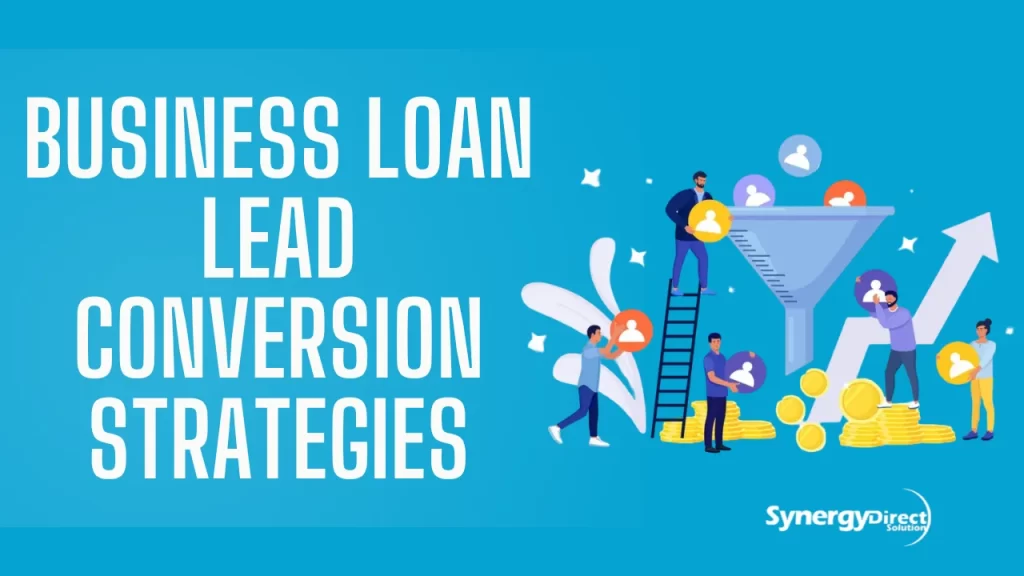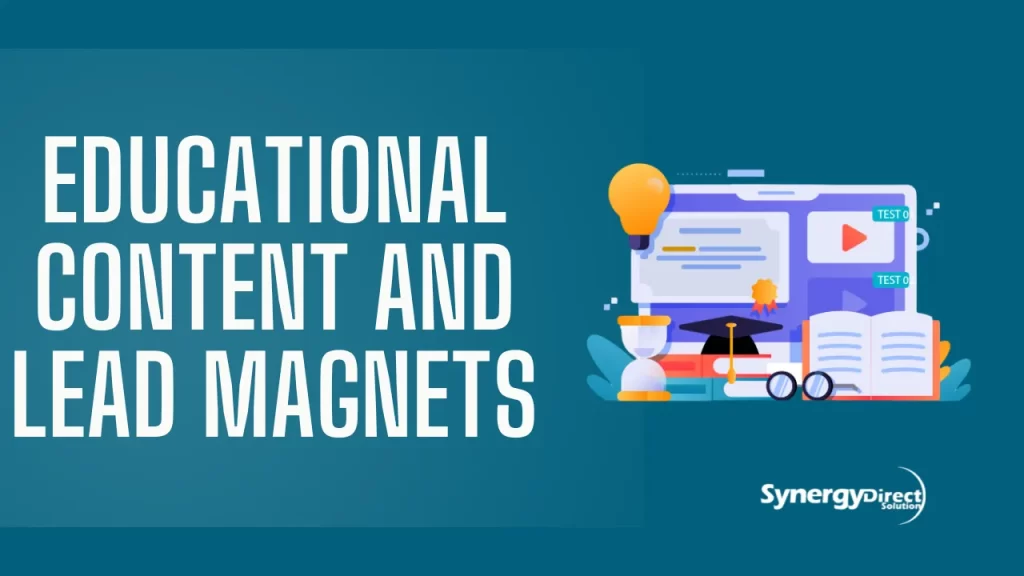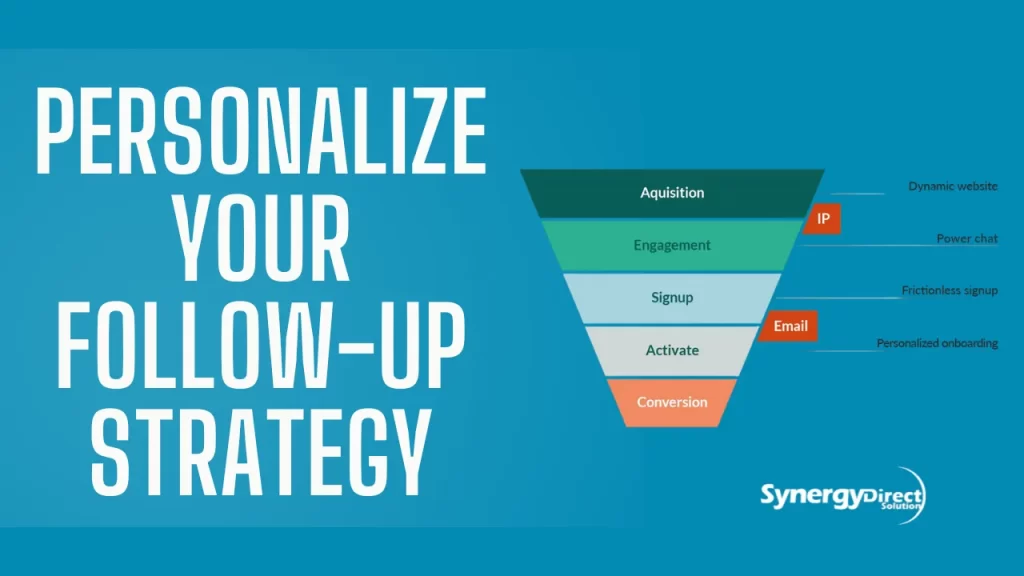Business Loan Lead Conversion Strategies: Maximizing Your Success
When it comes to securing business financing, the process often begins with generating leads. However, generating leads is only half of the battle—converting those leads into successful business loans is where the real challenge lies. In a competitive market, having effective lead conversion strategies can mean the difference between success and failure. This article will explore the most effective strategies for converting business loan leads into actual clients, boosting your sales, and optimizing your approach to business loan acquisition.

How Do I Get Business Loan Leads?
Generating high-quality business loan leads requires a mix of digital marketing, strategic networking, and data-driven outreach. One of the most effective ways to acquire business loan leads is through online marketing channels like search engine optimization (SEO), pay-per-click (PPC) advertising, and social media marketing.
Creating targeted landing pages and informative blog content around financing options helps attract potential borrowers actively seeking loans. Additionally, partnering with financial advisors, accountants, and commercial real estate agents can lead to strong referral networks.
Business directories, email campaigns, and purchasing verified lead lists from reputable sources are also viable options. For better conversion, using a customer relationship management (CRM) tool to track and nurture leads through automated follow-ups is essential. By combining inbound and outbound strategies, you can consistently generate and qualify business loan leads that convert into clients.
7 Strategies To Improve Your Business Loan Lead Generation Techniques as a Loan Officer
Here are 7 powerful strategies to improve your business loan lead generation techniques as a loan officer:
1. Build Strategic Referral Partnerships
Form alliances with professionals like accountants, commercial real estate agents, and business consultants. These individuals regularly work with businesses that may need loans.
Tips:
- Offer value first—share your expertise or send them referrals.
- Schedule regular check-ins to maintain relationships.
- Provide marketing materials or co-branded content they can share.
2. Optimize Your LinkedIn Profile and Outreach
LinkedIn is a goldmine for B2B connections. Make sure your profile showcases your expertise in business lending.
Tips:
- Use a professional photo and keyword-optimized headline.
- Post helpful content about financing options.
- Connect and message small business owners regularly, offering insights, not just sales pitches.
3. Leverage Targeted Email Marketing
Email marketing remains one of the most cost-effective ways to nurture leads.
Tips:
- Segment your list by business size, industry, or location.
- Send newsletters with success stories, loan tips, and current interest rates.
- Include a clear call-to-action (CTA) like “Schedule a Free Loan Consultation.”
4. Create Educational Content and Lead Magnets
Establish authority by offering free resources like eBooks, loan calculators, or business funding checklists.
Tips:
- Promote your lead magnets on your website, social media, and email campaigns.
- Use landing pages with forms to collect contact info.
- Follow up promptly with educational, value-based emails.

5. Host Webinars and Local Workshops
Offer free, live sessions about business financing to attract warm leads.
Tips:
- Cover topics like “How to Qualify for a Small Business Loan” or “Funding Options for Startups.”
- Promote through Eventbrite, LinkedIn, and local Facebook groups.
- Collect attendee info for future follow-up.
6. Utilize Local SEO and Google Business Profile
Make it easy for local businesses to find you when they search for funding help.
Tips:
- Optimize your Google Business Profile with your services, location, and reviews.
- Use location-based keywords on your website like “business loan officer in [City].”
- Encourage satisfied clients to leave 5-star reviews.
7. Follow Up with Cold Leads Consistently
Many leads aren’t ready immediately—but with consistent nurturing, they may convert later.
Tips:
- Set up a CRM system to track follow-ups and schedule reminders.
- Share relevant content via email every few weeks.
Reach out personally when rates drop or new programs become available.
Key Communication strategies for converting business loan leads
Here are Key Communication Strategies for Business Loan Lead Generation to help you, as a loan officer, connect better with potential clients and convert more leads:
1. Use Clear, Benefit-Focused Language
Avoid jargon and explain loan products in simple, outcome-focused terms.
Example:
Instead of saying “We offer SBA 7(a) loans,” say “Get up to $5 million in funding with low interest and long repayment terms, backed by the SBA.”
Why It Works:
Clients are more interested in what a loan does for them than the technical details.
2. Personalize Every Communication
Tailor your messaging to each lead’s business type, size, and financial goals.
Tips:
- Use their name and company name in emails or calls.
- Mention specific pain points (e.g., seasonal cash flow issues).
- Refer to previous conversations or inquiries.
3. Follow Up Quickly and Professionally
Speed shows reliability and increases your chances of conversion.
Tips:
- Respond within 24 hours or less.
- Use email templates for efficiency but personalize key points.
- Always include next steps (e.g., “Let’s schedule a quick 10-minute call.”)
4. Ask Open-Ended, Consultative Questions
Move beyond basic qualification questions by asking about goals, not just numbers.
Example Questions:
- “What are you hoping to achieve with this funding?”
- “Have you explored other financing options before?”
- “What’s your biggest challenge right now?”
Why It Works:
It builds trust and shows that you care about their business—not just selling a loan.
5. Use Visuals to Explain Loan Options
Sometimes charts, tables, or infographics can make complex information digestible.
Tools to Use:
- Loan comparison tables
- Payment schedule visuals
- ROI calculators
Where to Share:
- Emails
- Sales decks
- Website landing pages
6. Establish Credibility Early
Build trust by positioning yourself as a knowledgeable, helpful advisor.
How:
- Mention your years of experience or number of clients helped.
- Share client success stories or testimonials.
- Offer free insights before asking for any commitment.
7. Always End with a Clear Call to Action (CTA)
Each interaction should lead to a next step—never leave it open-ended.
Strong CTA Examples:
- “Would you be open to a 15-minute discovery call this week?”
- “Click here to upload your business financials securely.”
- “Let me send you a custom funding plan—what’s the best email?”
How do you determine if a business loan lead is qualified?
Determining if a business loan lead is qualified involves evaluating several key factors to ensure they are a viable candidate for a loan. Start by assessing the financial health of the business, including its revenue, profitability, and debt-to-income ratio. A qualified lead should demonstrate consistent revenue and manageable debt levels.
Additionally, the business’s time in operation plays a crucial role—established businesses with at least six months of operation are generally more reliable than startups. A solid credit score, both for the business and its owner, is also essential, as it indicates the borrower’s creditworthiness and ability to repay.
The purpose and amount of the loan should align with the business’s needs and financial situation, ensuring that the funds will be used responsibly. Furthermore, the business should show a clear ability to repay the loan, backed by positive cash flow and financial projections. Finally, a well-crafted business plan and a clear strategy for how the loan will be used can also signal a qualified lead. By evaluating these factors, you can determine if a business loan lead is a good fit for lending.
Lead conversion best practices
Here are Lead Conversion Best Practices specifically designed for loan officers and finance professionals looking to turn qualified leads into funded business loans:
1. Respond to Leads Immediately
Why It Matters:
The faster you respond, the higher the chance of conversion. A delay of even 30 minutes can drastically reduce engagement.
Best Practices:
- Use automated replies with a personal touch.
- Follow up with a phone call within the first hour.
- Integrate your CRM with mobile alerts for instant lead notifications.
2. Qualify Leads Early and Efficiently
Why It Matters:
Not every inquiry is worth your time. Prioritizing qualified leads helps you focus on serious borrowers.
Best Practices:
- Ask targeted questions during the first interaction (e.g., revenue, time in business, credit score).
- Use qualification frameworks like BANT (Budget, Authority, Need, Timeline).
- Score leads inside your CRM to streamline follow-up.
3. Personalize Your Follow-Up Strategy
Why It Matters:
Generic emails or calls often get ignored. Personalization builds trust and relevance.
Best Practices:
- Reference specific business goals or previous conversations.
- Send industry-relevant loan solutions or content.
- Use the lead’s name and business name in all communication.

4. Use a Multi-Channel Follow-Up Approach
Why It Matters:
Different people respond better on different platforms. Relying on only one channel limits your conversion rate.
Best Practices:
- Combine email, phone, LinkedIn, and SMS follow-ups.
- Track which channel gets the most engagement per lead.
- Space follow-ups 2–4 days apart with increasing urgency.
5. Provide Value Before the Ask
Why It Matters:
Leads are more likely to convert when you demonstrate expertise and helpfulness upfront.
Best Practices:
- Share case studies of businesses like theirs.
- Offer a free loan readiness assessment.
- Explain loan options clearly with charts or calculators.
6. Overcome Objections with Education
Why It Matters:
Most objections stem from uncertainty. Clear information and reassurance increase confidence.
Best Practices:
- Address concerns around interest rates, approval time, or qualification openly.
- Break down costs, timelines, and benefits.
- Offer to compare loan products side-by-side.
7. Set Clear Next Steps Every Time
Why It Matters:
Leads stall when they don’t know what happens next. Clear direction boosts momentum.
Best Practices:
- Schedule the next call during your current one.
- Send calendar invites with specific goals (e.g., document collection).
- End every email with a strong CTA like: “Can we schedule your funding call this Thursday?”
Lead Conversion Optimization
Lead Conversion Optimization is the strategic process of enhancing every step of your sales funnel to increase the percentage of leads that become paying clients. In the world of business lending, where timing, trust, and clarity matter most, optimizing lead conversion means more than just following up—it involves building a system that nurtures leads with personalized, timely, and value-driven communication.
This includes improving your response speed, segmenting leads based on quality, using multi-channel follow-up strategies, and providing real solutions that address client pain points.
By consistently analyzing performance data and adjusting your approach, you can streamline the borrower journey and significantly boost your funding success rate. Ultimately, lead conversion optimization turns more inquiries into closed deals—maximizing your revenue and strengthening client relationships.
Startup business loan lead conversion strategies
Startup Business Loan Lead Conversion Strategies focus on nurturing early-stage entrepreneurs through a lending process that often feels complex and intimidating. Since startups typically lack financial history or collateral, it’s crucial to establish trust and demonstrate your value early on.
Start by tailoring your messaging to address common startup concerns, such as loan eligibility, credit requirements, and funding timelines. Offer educational content—like funding guides or startup readiness checklists—to build authority. Use a consultative approach during follow-ups, helping founders understand their options rather than pushing them to apply.
Since many startup leads are in the research phase, implement a long-term nurture strategy through email sequences, SMS check-ins, and educational webinars. Prioritize speed, clarity, and empathy, and always pre-qualify leads efficiently to focus your energy on those most likely to convert. By aligning your conversion strategy with a startup’s unique journey, you position yourself as a trusted funding partner from day one.
Conclusion
In conclusion, successful business loan lead conversion is all about building trust, offering value, and being strategic in your follow-up efforts. By implementing the right lead generation techniques and optimizing your communication strategies, you can effectively convert more leads into funding clients. Whether working with startups or established businesses, a personalized, consultative approach is key to addressing client needs and overcoming objections. By consistently refining your process and utilizing tools like CRM systems and multi-channel outreach, you can increase your conversion rates, strengthen relationships, and ultimately drive business growth. With these strategies in place, you’ll position yourself as a trusted advisor in the competitive world of business lending.
FAQS
1. What are the best times of day to follow up with business loan leads?
The best times to follow up with business loan leads are typically between 10:00 AM and 12:00 PM and 2:00 PM to 4:00 PM local time. These windows avoid early morning distractions and late-day fatigue. Tuesdays through Thursdays also tend to yield the highest response rates. Testing follow-up timing using A/B scheduling can help refine your contact strategy based on your specific audience.
2. How many follow-ups are ideal before considering a business loan lead cold?
On average, 5 to 7 follow-ups across multiple channels (phone, email, LinkedIn, SMS) are considered ideal before labeling a lead as cold. However, the timeline matters—space these follow-ups over 10 to 14 business days, adjusting based on urgency or engagement. Some leads may convert after 30+ days with consistent, non-intrusive nurturing.
3. What should a business loan follow-up email include to increase response rates?
A high-converting business loan follow-up email should include:
- A personalized greeting using the recipient’s name and business name
- A clear value proposition, such as funding benefits or a limited-time rate offer
- A brief reminder of prior contact or inquiry
- A single, strong call-to-action like “Schedule a 10-minute consultation”
- Contact information and credibility signals, such as certifications or testimonials
Adding a calendar scheduling link or secure document upload option can also improve engagement.
4. Can CRM automation hurt conversion rates if overused in loan follow-ups?
Yes, over-relying on CRM automation without personalization can reduce conversions. While automation increases efficiency, too many generic or robotic messages may feel impersonal, causing potential borrowers to disengage. Best practice is to blend automation with humanized check-ins, personalized subject lines, and context-aware follow-ups that show real intent to help.
5. How can I re-engage old or unresponsive business loan leads?
To re-engage unresponsive leads:
- Send a re-introduction email with updated lending options or improved terms
- Share a limited-time offer, rate reduction, or seasonal funding opportunity
- Offer a free business funding assessment or consultation
- Use subject lines like “Still looking for funding?” or “Here’s a new option you may qualify for”
Reconnect on LinkedIn with a friendly, non-salesy message
